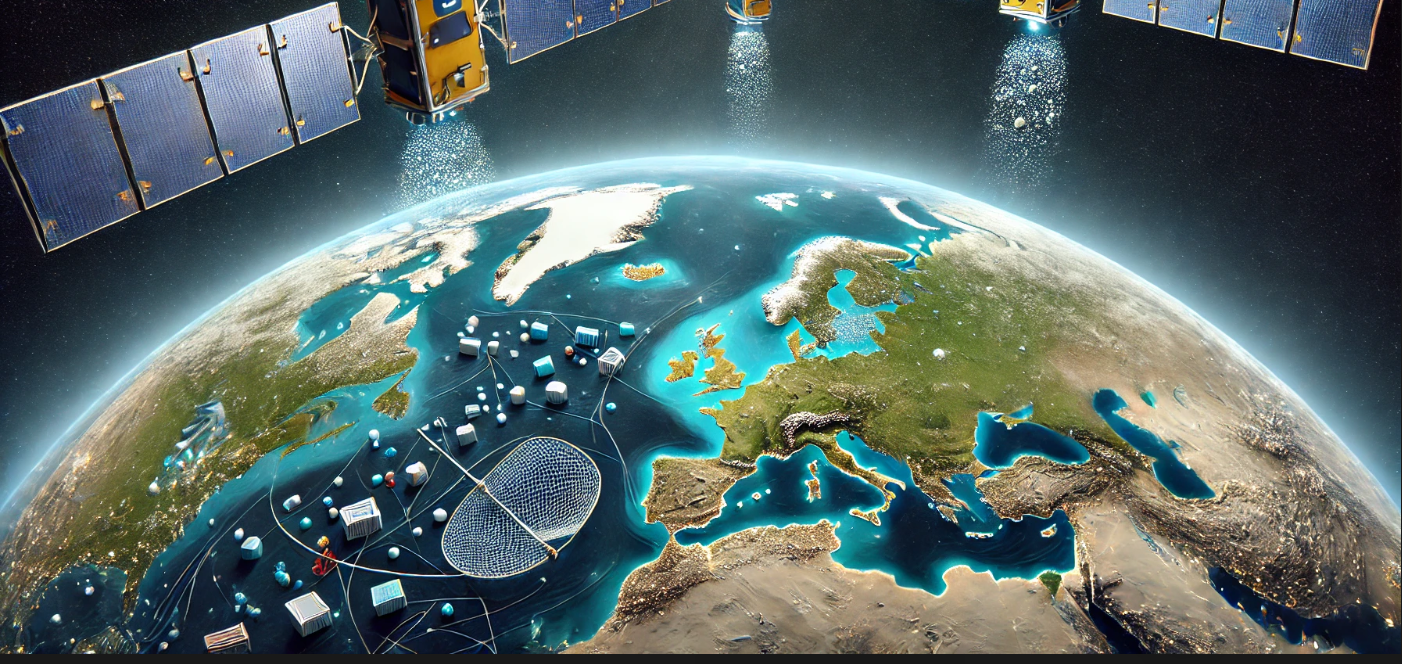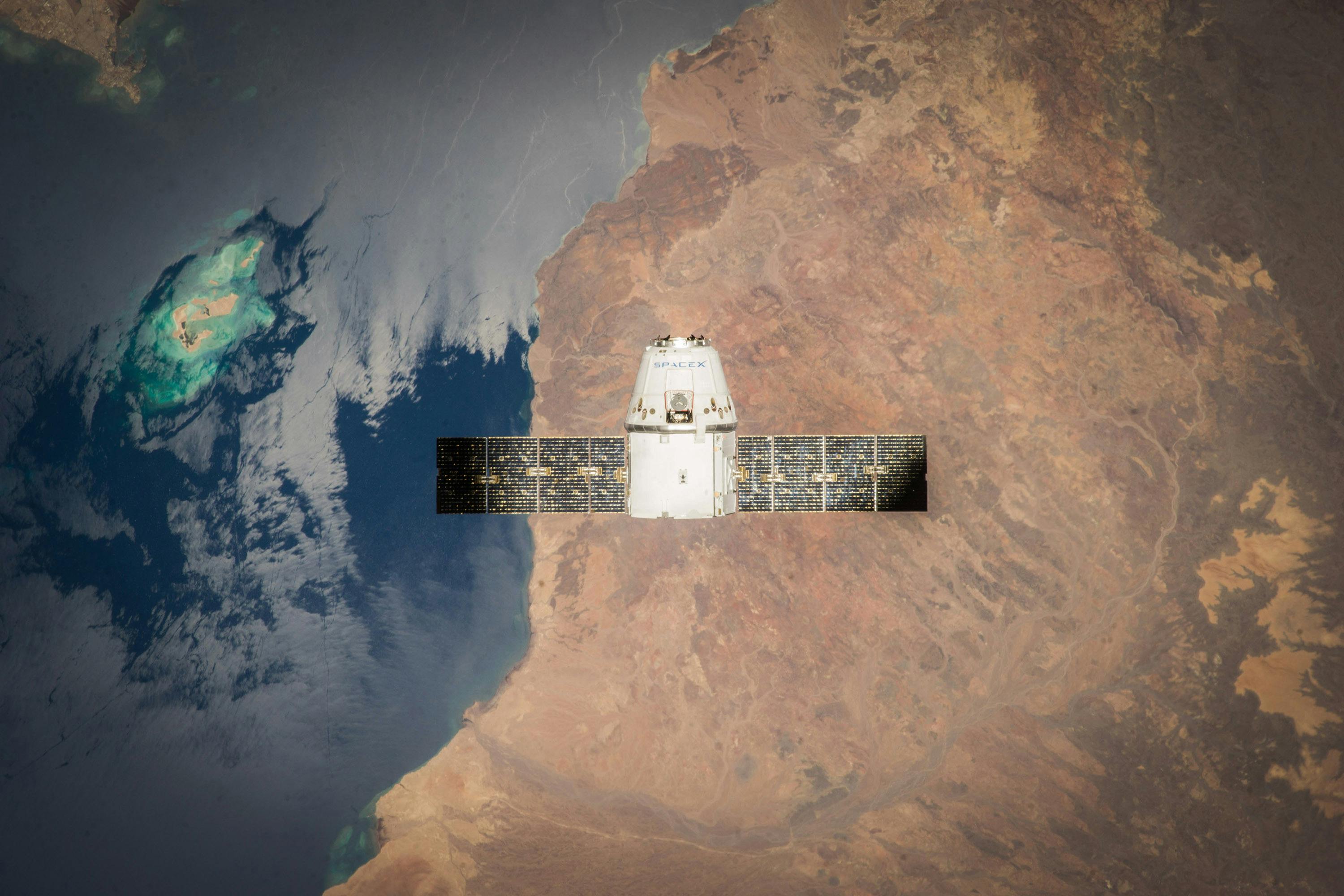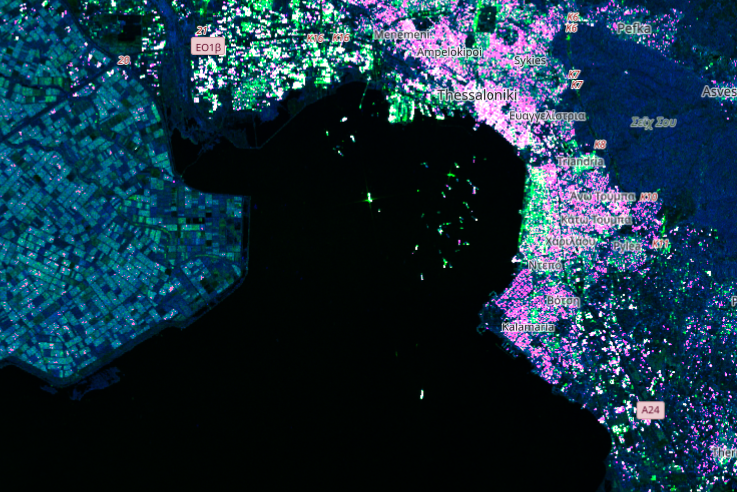Eyes in Space. Action at Sea.
Leveraging space technology to locate and eliminate abandoned fishing gear and plastics in water surfaces.
Abandoned Fishing Gear and Plastic Pollution
Abandoned fishing gear, often called ghost gear, is one of the most persistent and harmful forms of marine pollution. Made of durable synthetic materials, these nets, lines, and traps continue to drift through the oceans for years, ensnaring marine life in an endless cycle of unintended capture. Fish, sea turtles, seabirds, and even large marine mammals can become trapped, suffering injuries or death from exhaustion and starvation. As these nets degrade, they fragment into microplastics, polluting the water and entering the food chain, with potential consequences for both marine ecosystems and human health.
Beyond its devastating environmental impact, ghost gear poses significant economic and safety risks. Lost and drifting fishing equipment damages fragile underwater habitats, threatening biodiversity and disrupting local fisheries. Coastal communities reliant on fishing face dwindling resources as ghost gear continues to trap and kill fish indiscriminately. Additionally, abandoned nets create hazards for marine navigation, entangling boat propellers and endangering maritime operations. Without intervention, this growing issue will continue to harm marine environments, economies, and those who depend on the ocean for their livelihoods.
The environmental impact and hazards of ghost gear are profound:
- Marine Life Entanglement: Ghost gear continues to trap and kill marine animals, including endangered species leading to reinstated regulations aimed at their protection.In the Greater Atlantic Region, marine mammals such as humpback whales, North Atlantic right whales, and others have been reported entangled in fishing gear and marine debris, leading to injuries and fatalities.
- Habitat Damage: Derelict fishing gear can damage sensitive marine habitats, such as coral reefs and seagrass beds, disrupting the ecological balance. Studies from impact assessment on Mediterranean sea indicate that lost and abandoned fishing gear affects all marine habitats, including coastal and offshore areas like bathyal habitats and canyons.
- Microplastic Pollution: As these materials degrade, they contribute to microplastic pollution, which infiltrates the food chain, affecting marine life and potentially human health. A study investigating seven commercial fish species from the Black Sea found plastics in the gastrointestinal tracts of all species analyzed, indicating significant microplastic contamination in the region's marine life

Tracking Abandoned Gear Leveraging Satellite Data
At NetFinder, we are on a mission to protect our oceans by tackling one of the most pressing environmental issues: abandoned fishing gear, also known as "ghost gear." Leveraging cutting-edge satellite data and services provided by EUSPA (European Union Agency for the Space Programme), we have developed an innovative solution to detect and monitor ghost gear in seas and oceans worldwide.
Our technology harnesses the power of satellite imagery. advanced analytics and AI technology to identify and track abandoned fishing nets, lines, and traps that pose a significant threat to marine life, ecosystems, and coastal communities. By providing actionable insights, we empower governments, NGOs, fishing industries, coastal communities and individuals to take protective actions in cleaning up our oceans and preventing further damage.
Detecting abandoned fishing gear and plastics using satellite data from Copernicus, Galileo, and other EUSPA services involves a combination of remote sensing techniques, AI-based image analysis, complex algorithms, models and geolocation services.
The methods and data we use to track plastic and fishing gear are the following:
- Multispectral and Hyperspectral Imaging (Copernicus Sentinel-2 & Sentinel-3): Plastics have unique spectral reflectance properties in the visible and near-infrared (NIR) spectrum. Sentinel-2's multispectral bands (e.g., B8A, B11, B12) and Sentinel-3's OLCI sensor can identify floating plastics by distinguishing their spectral characteristics from water and organic materials. Normalized Difference Plastic Index (NDPI) is used to detect plastic debris.
- Synthetic Aperture Radar (SAR) Imaging (Sentinel-1): Sentinel-1 SAR data can detect fishing nets and debris due to their distinct radar reflectance properties. AI-driven SAR image classification can improve detection rates. Algorithms powered by AI compare similar methodologies used for oil spill tracking and adapts them for detecting plastic patches and ghost nets.
- Altimetry and Ocean Currents Tracking (Sentinel-6, Copernicus Marine Service): Oceanographic models using altimetry data (Sentinel-6) combined with Copernicus Marine Environment Monitoring Service (CMEMS) can predict the movement of floating plastics and abandoned fishing gear. 2D Lagrangian model is used to to simulate how plastics drift based on ocean currents.
- Thermal Imaging (Sentinel-3 SLSTR): Plastics have different heat absorption and emissivity properties compared to water, allowing Sentinel-3’s SLSTR instrument to detect debris using thermal infrared bands..

Services
Featured Services

Satellite Data Algorithms
Satellite data algorithms can process satellite imagery and AIS (Automatic Identification System) data to identify unusual fishing patterns and detect areas where abandoned fishing gear is likely to accumulate. Machine learning models trained on satellite datasets enhance detection accuracy.

Spectral Image Analysis
Detect abandoned fishing gear by identifying plastics and synthetic nets based on their unique reflectance signatures in different spectral bands. By combining multispectral and hyperspectral data with oceanographic parameters, this technique differentiates lost gear from marine debris and natural elements.

Oceanographic Models
Oceanographic models enhance tracking abandoned fishing gear by simulating ocean currents, winds, and wave patterns to predict the drift and accumulation zones of lost nets and traps. The real-time satellite data with these models, the accuracy of the results is significantly improved.
Team
CHECK OUR TEAM
Thanasis Zafeiriou
Business & Economics Specialist in Informatics, Business & Economics, and Graphic DesignApostolos Tsalkitzis
Data Analyst Expert in data interpretation and advanced predictive analysis.Giannis Doublas
Web Developer Expert in full-stack web development and satellite API data processing.Konstantinos Georgiadis
Oceanographer BSc in Marine Sciences, MSc in Ecological Quality and Water Manegement, MSc in Fisheries Biology and ManagementContact
Let's work together to save the seas
Address
Somewhere in Greece, Thessaloniki, Macedonia 54635
Call Us
+2310 22334455
Email Us
info@netfinder.org